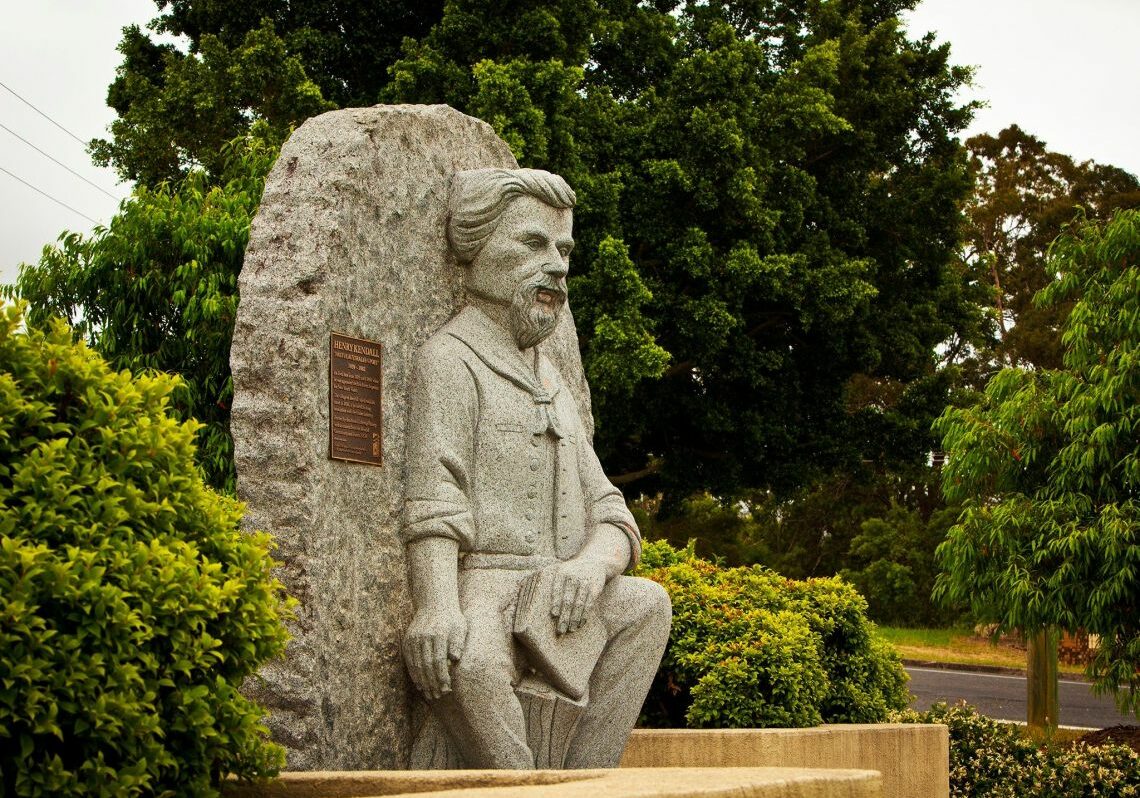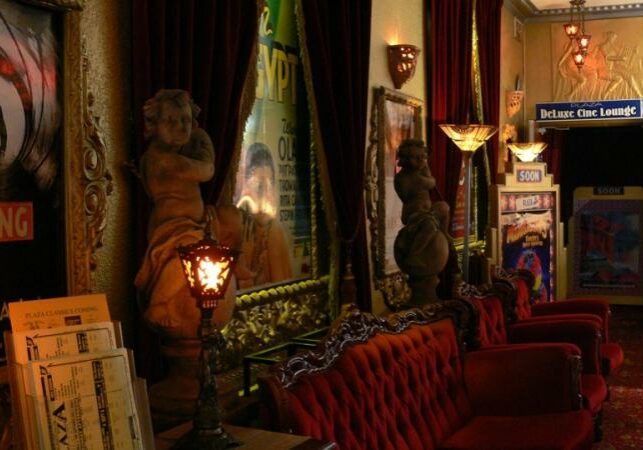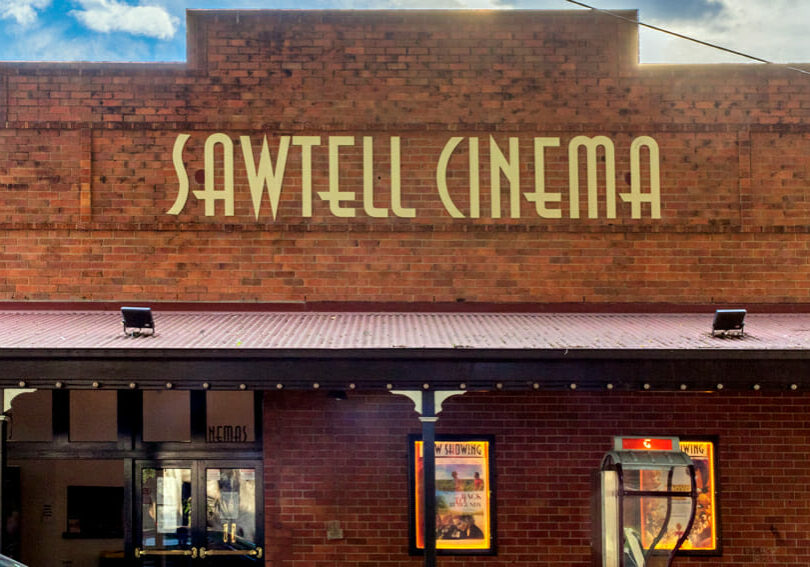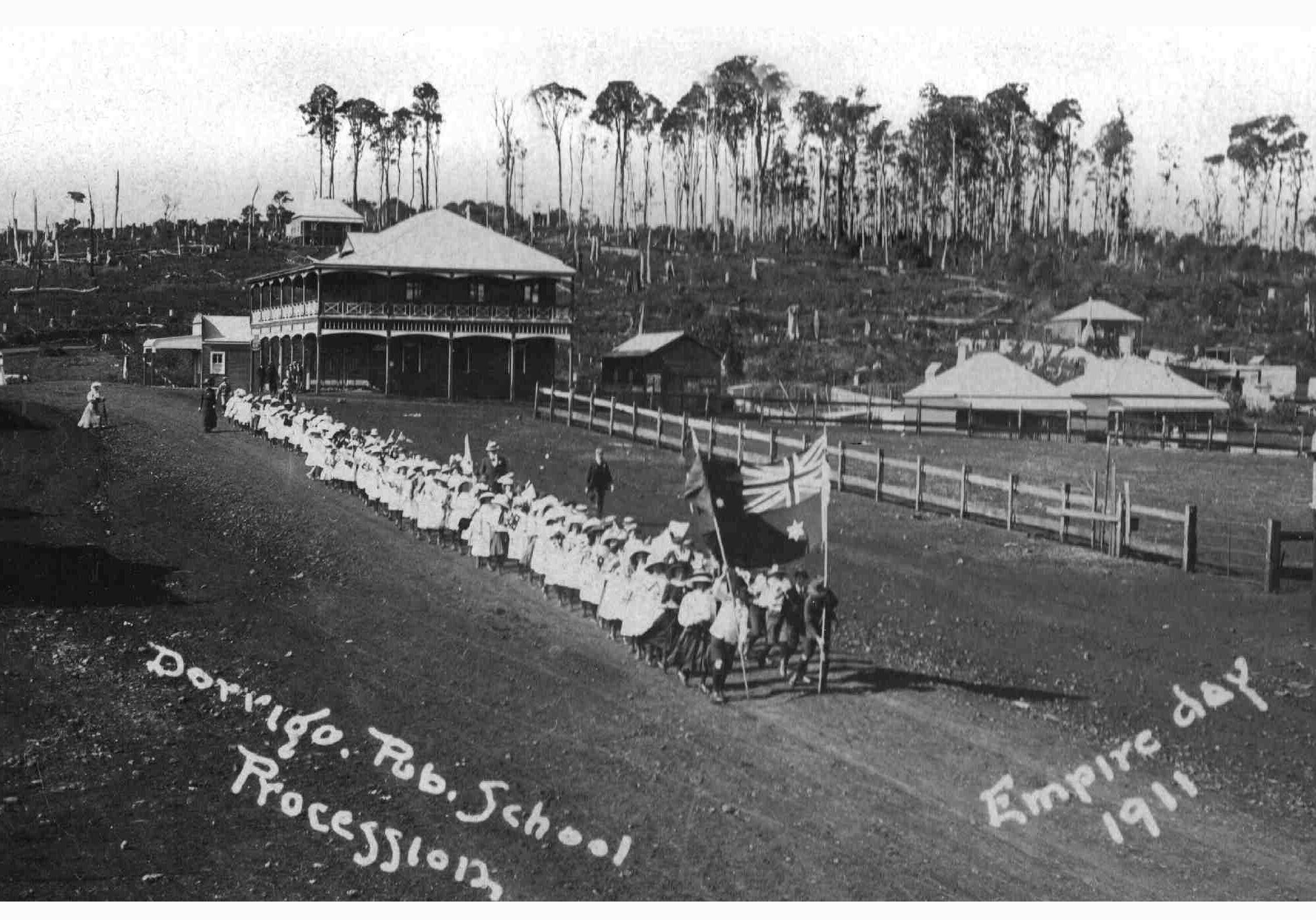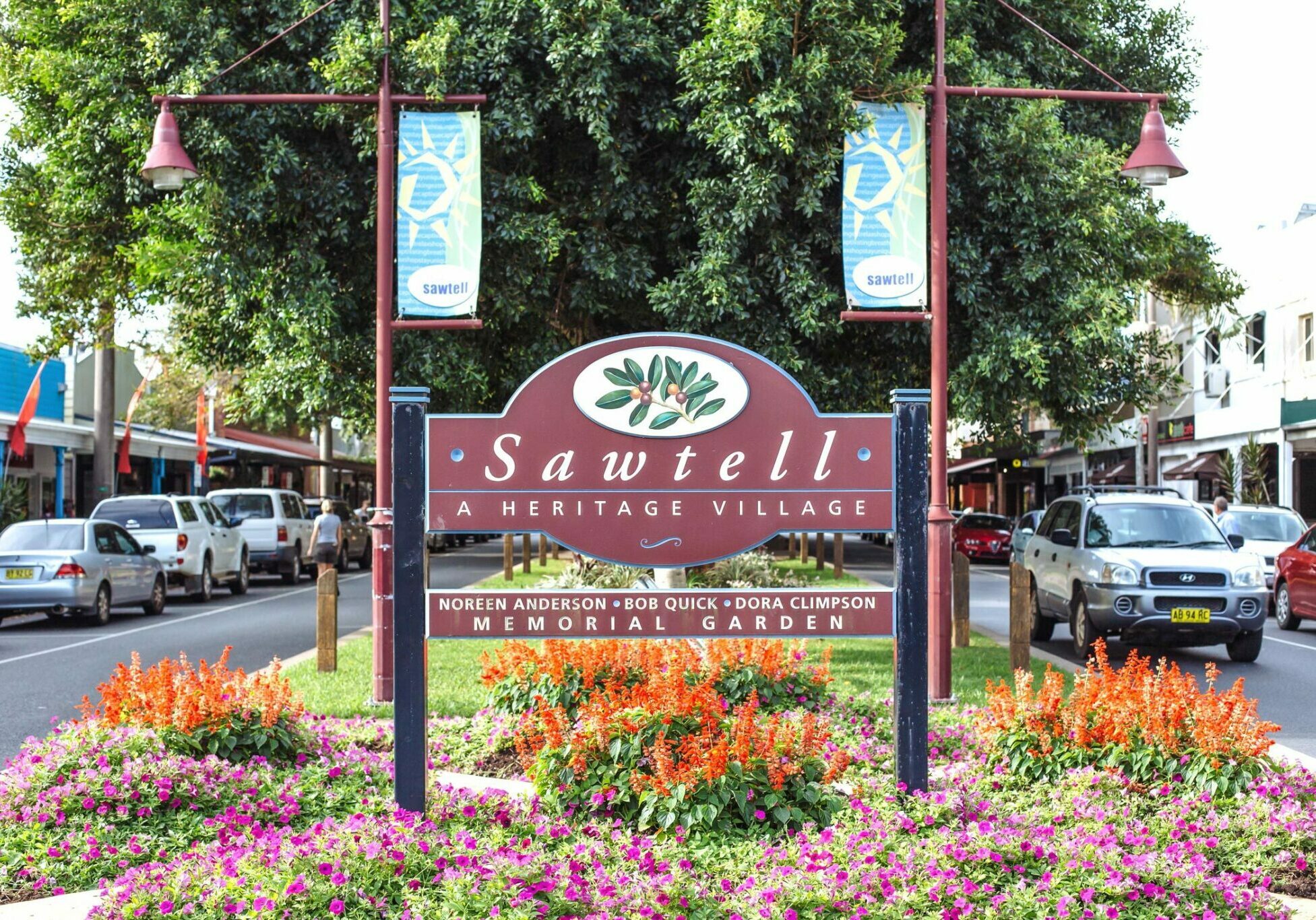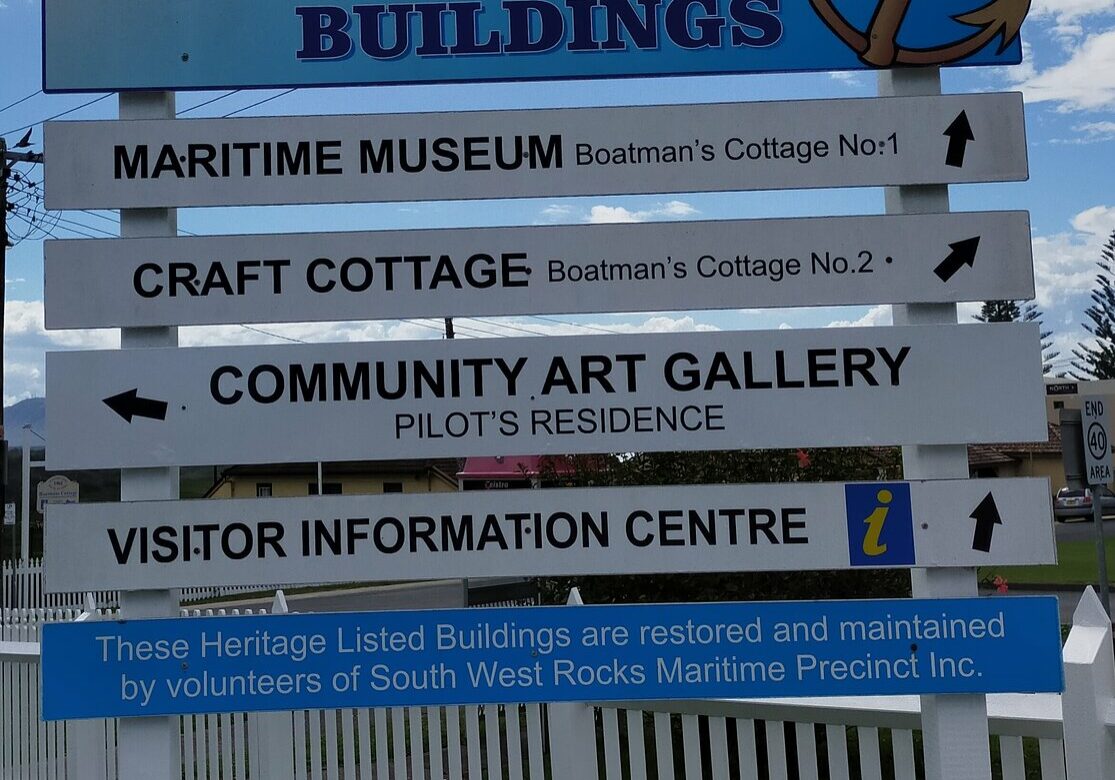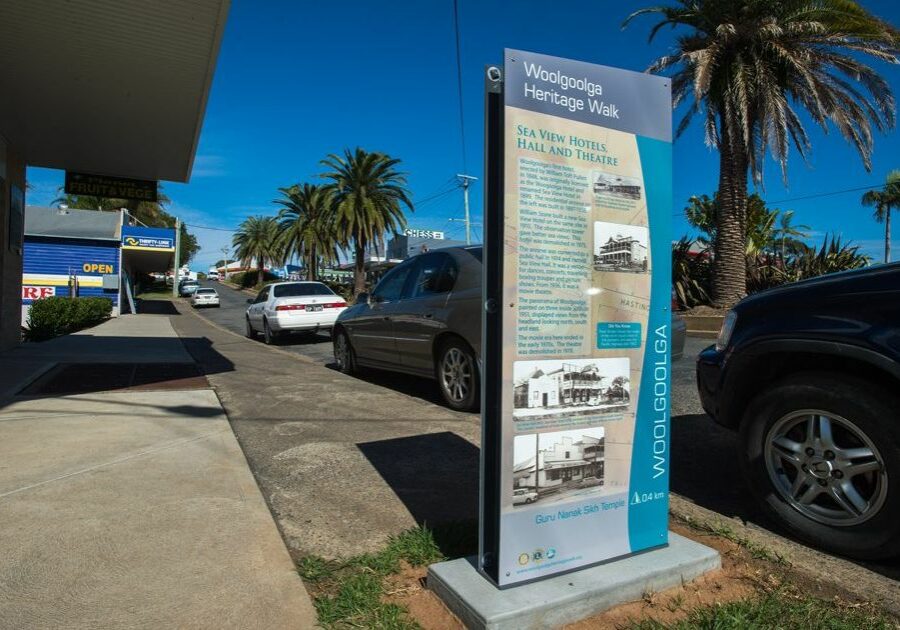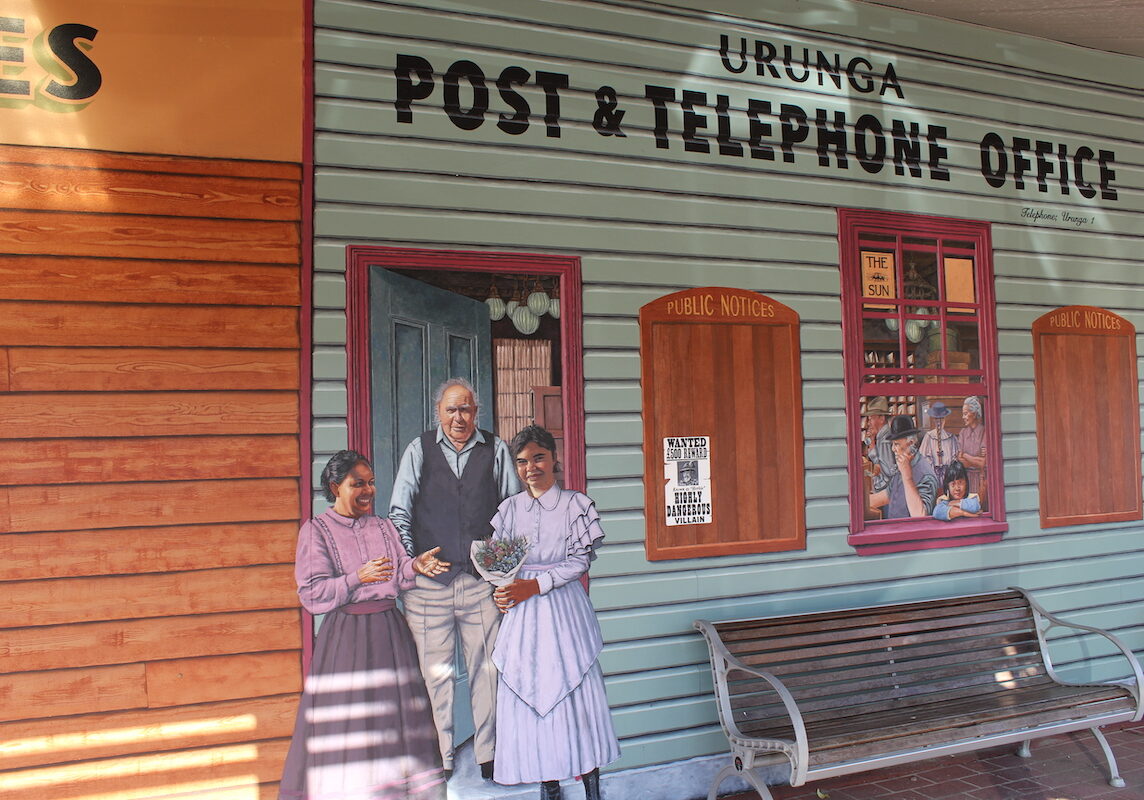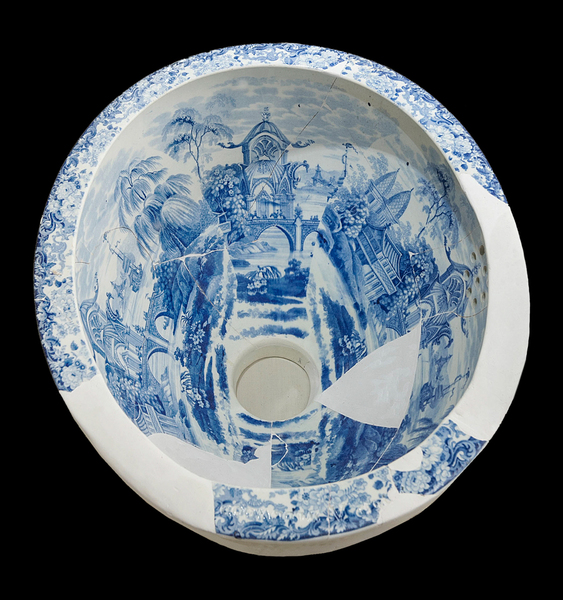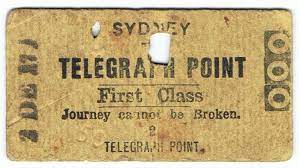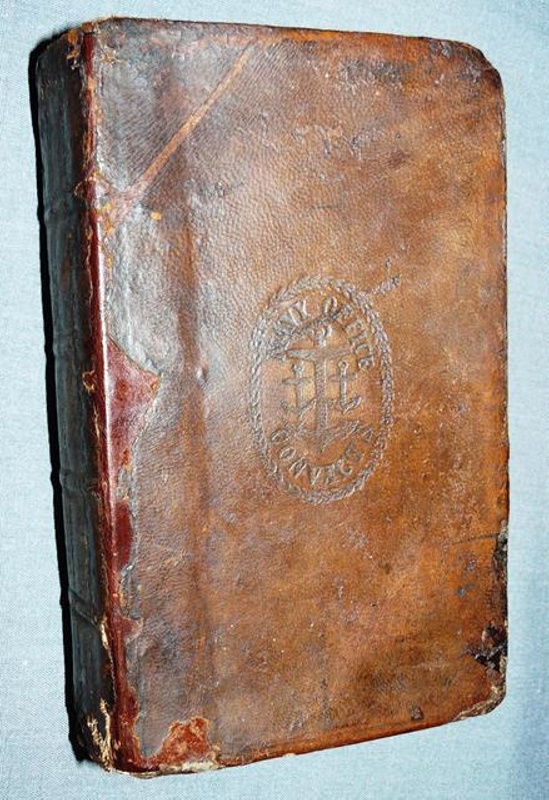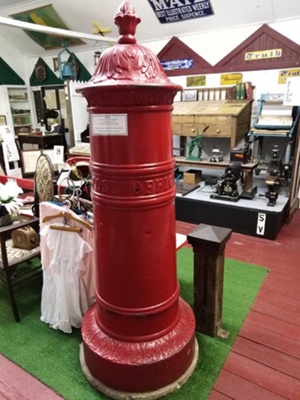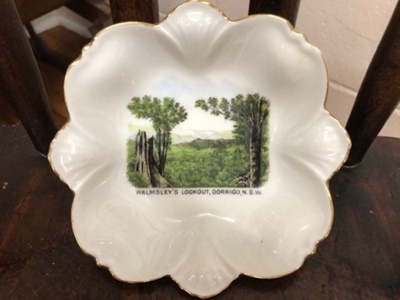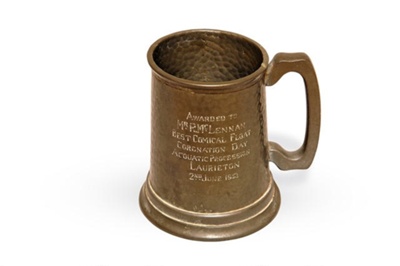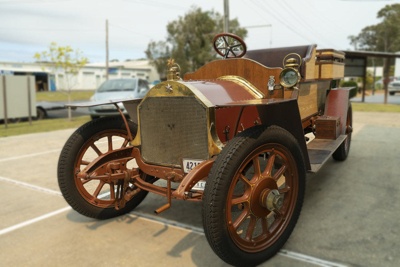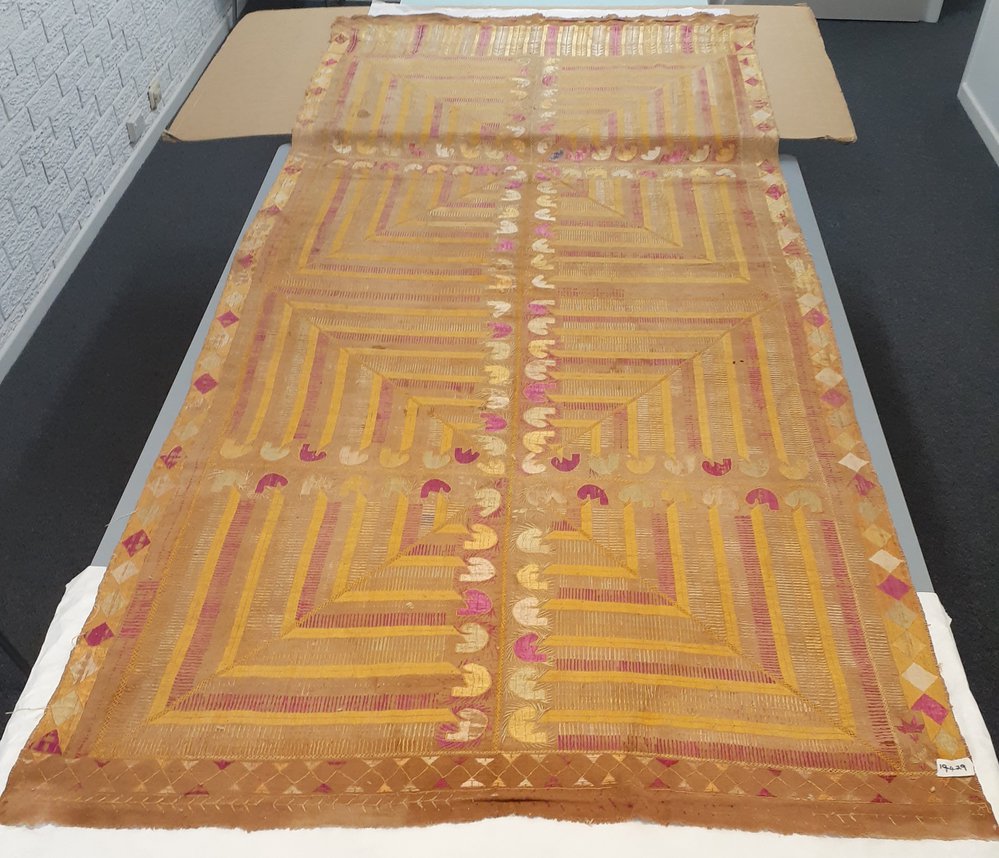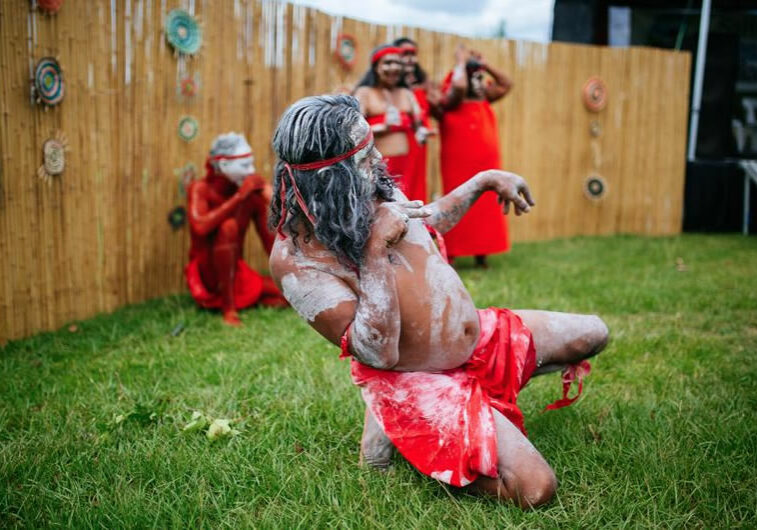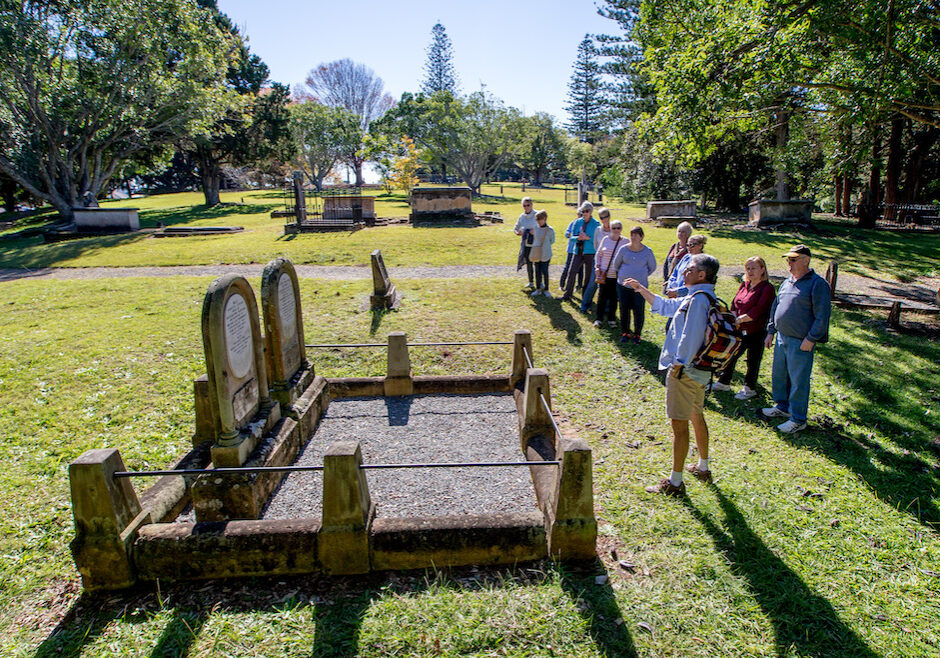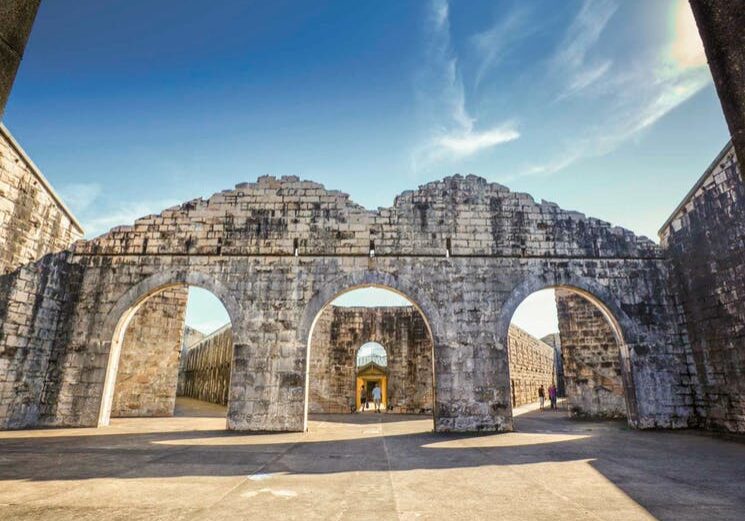SHINE
SHARED STORIES
Shining a light on our heritage and museums
1 April – 31 May 2023
With its theme of Shared Stories taken from the larger Australian Heritage Festival, the 2023 SHINE Festival invites all on or visiting the Mid North Coast to explore our layered history as we share stories of our natural, cultural, built and Indigenous heritage. You are invited to actively engage in heritage, discover untold histories and reflect on past stories that shape our future.

Breaking News
Every week during the SHINE Festival we will be bringing you major news features with a twist about heritage on the Mid North Coast, looking not to the past but to the future.
Events and Experiences
A traditional part of heritage festivals has always been the staging of special events to engage people in their history. During the months of April and May we will keep you up to date with what to see and do across the region.
Sorry, we couldn't find any posts. Please try a different search.
Postcards
Traditional postcards have been around since 1840, a way of sharing and experiencing something memorable, often by describing what is going on in the featured picture. They tell a story.
During SHINE our Postcards from the Mid North Coast will also tell stories providing an insight into some of our more fascinating tales and facts that connect to our places and people. We will draw on our Creative Communities feature and our Public Art Trail to provide even more insight to what is already on our website for such matters.
Kendall - The Poets Village
Kendall, one of the eight designated Creative Communities of the Mid North Coast is named after the famous 19th century Australian poet, Henry Kendall, who lived and worked in the area from 1876 to 1881. He came to the then village of Camden Haven not as a poet, but to work as a clerk in the local timber mill. He then took up a posting as Inspector of Forests partly through the patronage of Sir Henry Parkes, Premier of New South Wales.
Henry Kendall is now appreciated as one of the very first Australian poets to draw his inspiration from the Australian landscape and its way of life. Prior to Kendall coming to the area he had published various works with little commercial success. It is said the works he wrote while in Kendall are among his best and he is perhaps best known for his poem, 'Bellbirds'.
While in the area he also wrote topical and political skits for the press and in 1879 wrote the words for the cantana to be sung at the Sydney International Exhibition at which 23 countries were represented. In addition he won 100 guineas for an occasional poem in celebration of the same event. In 1880 Kendall published his poem 'Songs from the Mountain' which was a major success.
Kendall used his penmanship to write to the Post Master General lending support to the villagers request for a post office. When it was later established the name of the village was changed in 1891 in his honour. Sadly he had died in 1882, a year after leaving the beautiful Camden Haven district.
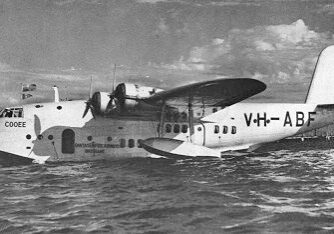
Flying Fashion
The Port Macquarie Clipper was a luxurious flying boat service between Rose Bay and Port Macquarie established in 1949 by brothers Philip and Roger Dulhunty. Using converted Sunderland flying boats, it was the first regular flying service to Port Macquarie. This mode of transport offered a smooth armchair ride with roomy padded seats and port holes at eye level for each passenger to relax and enjoy the beauty of the coast from the air.
In January 1950 to publicise the new bi-weekly service, fashion parades were staged on board during flight, with Sydney models wearing the latest playsuits and swimwear parading on the promenade deck and down the centre aisle. On the flying boat's arrival at Port Macquarie, the models paraded on the wings, much to the delight of a large crowd gathered on the banks of the Hastings River, near Hibbard.
The unique flying fashion parade was captured by photographers from the Sydney Morning Herald and Daily Telegraph who had been invited along to record and publicise the event. Not all passengers appreciated the surprise publicity gimmick which resulted in the flights leaving late and the owners subjected to some criticism!
From Hippies to Hipsters
When you first walk into the Bellingen Museum on the town green in the centre of town its collection looks like that of many small community museums with a focus on life on the land and in the town for its first hundred years or so. And true there are many such stories to be shared. However Bellingen Museum is now starting to tell a more recent story, one that starts in the 1960’s with the arrival of the hippie movement to Australia and this small rural town.
Hippies were known for their unique style, favouring long hair and casual, often unconventional, dress, sometimes in “psychedelic” colours. They preached free love, promoted flower power, and cautioned against trusting anyone over thirty. They repudiated the mainstream values of the times and experimented with communal or cooperative living arrangements. They often adopted vegetarian diets based on unprocessed foods and practiced holistic medicine. All of these aspects can still be seen in the character of Bellingen, however it is only now this period of history is being well documented. The Museum is beginning to feature its collection of images and early footage as well as a feature film, "Bellingen - The Promised Land" that was made in 2021 by Peter Geddes and Peter Gailey.
While with rapidly escalating property prices in the area in the last fifteen years Bellingen might more correctly now be described as a place for hipsters rather than hippies, this early hippie history is being finally recognised and shared, particularly the legacy they have created in making Bellingen so well known as a centre for the arts, festivals and music.

On the West Bank - Smithtown
On the west side of the Macleay River directly opposite Gladstone is another small town with a very different history. Smithtown is home to a multi-million-dollar industrial complex and it has been that home for over a century. Smithtown is the home of Milo, the chocolate malt powder drink that for many Australians, is the taste of their childhood.
The Smithtown site actually started as a milk processing plant in 1896 but Nestle took ownership in 1921. What set it apart was that it was the first site to produce Milo which was created by Australian chemist and food researcher Thomas Mayne during the Depression. The malty favourite was initially intended to help children receive enough nutrients from their daily diet. The product was officially launched at the Sydney Royal Easter Show in 1934 and shortly after, the Smithtown factory began mass production.
As the factory recently celebrated its centenary, there are very few families among Smithtown's population of 600 who don't have a personal connection to it. It remains one of the region's largest employers, with more than 200 workers, most of them locals, pumping out 200,000 cans a day — that's 13,000 tonnes a year — of Milo for the world market. More than 100 members of the workforce in 2021 had been working at the factory for more than 25 years. Roughly 15-20 per cent of the workforce has more than one member of their family onsite.
Our thanks to Keely Johnson ABC Mid North Coast for background information.
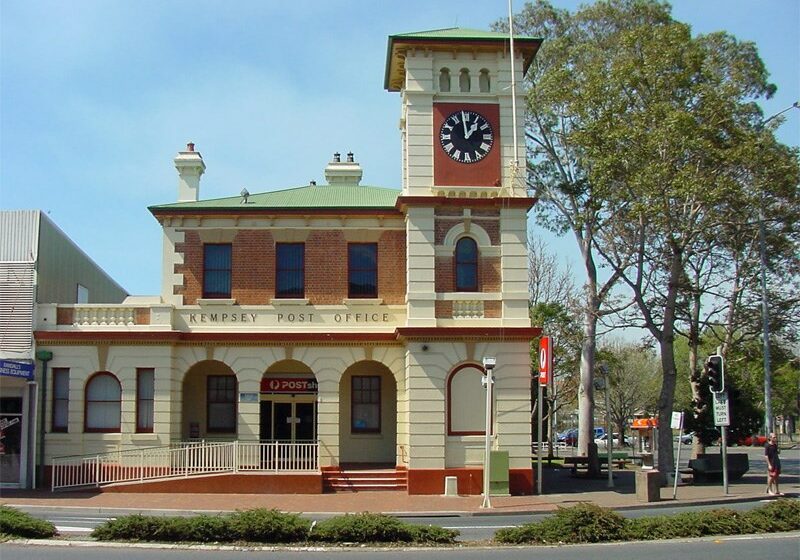
It’s in the Post. Our Heritage Listed Post Offices
The appointment of James Barnet as Acting Colonial Architect in 1862 coincided with a considerable increase in funding to the public works program. Between 1865 and 1890 the Colonial Architects Office was responsible for the building and maintenance of 169 post offices and telegraph offices in NSW. The Kempsey Post Office was completed and occupied in March 1886. The two-storey building contained the Post Office, a drawing room, dining room, four bedrooms, a bathroom with a force pump and the clock tower. A ball was erected on the top of the clock tower to announce the arrival of steamers at the town wharf. However, within five months the ball was found to be out of order, and was replaced by a flagstaff. The building is now listed as being of State Significance.
The Wingham Post Office built in 1884 is also associated with the Colonial Architect’s Office under James Barnet, and the Government Architect’s Office under Walter Liberty Vernon. It is a strong example of the Victorian Regency style, with Federation period additions, and makes an important aesthetic contribution to the civic precinct in Wingham. It has since 2000 been listed as being of State Significance.
The final Post Office of note is the Bellingen Post Office built in 1909. It is part of the highly significant Police/Court House grouping and the larger Hyde Street historic precinct. This weatherboard building with Federation style detailing also includes the Postmasters residence. It is listed as being of Local Significance.
Image: Kempsey Post Office
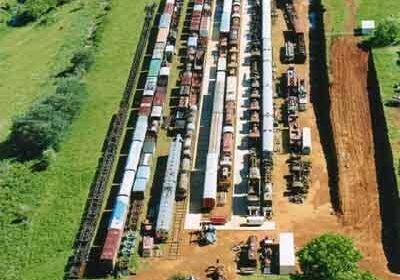
The “Largest” Collection on the Mid North Coast
The Dorrigo Steam Railway and Museum is home to the largest collection of preserved railway vehicles and memorabilia from the various Government and private railways of New South Wales. It is one of the most comprehensive railway collections in the world, with exhibits ranging from 1855 to the present day.
To date, the museum collection comprises 67 locomotives, 280 carriages and wagons and over 19 railmotors. The locomotives range from tiny, 8 ton, shunting units to the massive, 260 ton Beyer-Garratt (the largest locomotive in the southern hemisphere), many over 100 years old. The passenger carriage collection includes such specialised vehicles as a prison van, rail pay buses, travelling post offices, bulk mail vans, sleeping cars, the former Premier's car and a sleeping car allocated to General Douglas MacArthur, as well as everyday vehicles from times past. The freight rolling stock includes vehicles for the carriage of almost every commodity, including grain, livestock, coal, oil, cement, biscuits, fruit, water, limestone, superphosphate, meat, milk, bitumen, explosives, machinery, coil steel, automobiles, etc.
Unfortunately the collection is not yet open to the public. To ensure the long term security of the museum project, the museum has purchased a 53 acre property adjacent to Dorrigo railway station yard. The museum firmly believes in housing all of the equipment under cover.
Stepping Back in Time… but just how far?
When visitors today go to the Plaza Theatre in Laurieton they are surprised by the foyer, that has been described as being at the charming edge of kitsch. The quaint traditional box office and art deco cinema interiors with gilt trimmed proscenium, as well as the lights, statues, plaster work and theatre organ give the impression of 1920s - 1930s architecture, however the cinema was built much later. In fact its first screening took place on the 25th February 1959, when the film Peyton Place starring Lana Turner was screened. Previously movies had been shown at the School of Arts across the road.
A steel frame building made of bricks the then new Plaza Theatre was a vast improvement to the old School of Arts Hall with seating for 400. The theatre was run by the Hatsatouris family who were long established exhibitors in Taree Civic and Savoy and the Ritz theatre at Port Macquarie. The Plaza Theatre remained part of the Hatsatouris circuit until 1970 and the property was sold in 1971. Eventually the cinema passed through the hands of a few owners which resulted in several openings and closings. Television and video took its toll and by 1998 the Plaza Theatre was closed permanently. The auditorium was totally stripped and the whole building slated for demolition.
It was then rescued by former Queensland cinema exhibitor, David McGowan who decided to revitalise the cinema. In 1999 the Plaza Theatre was spared from demolition and was extensively rebuilt, inside and out. A new proscenium and screen was erected a few meters forward of the original. The whole cinema was fitted with new seating, the latest Kinoton projection equipment was installed as well as digital sound. Add to the list, air conditioning, emergency power generation equipment and many other speciality heritage features. It is now once again a favourite with both locals and tourists although not as old as most people imagine.
Sawtell Community Spirit
Local halls have been at the heart of the community in many parts of the Mid North Coast. In Sawtell in the 1930’s Doris and Alan Brissett purchased the then local Community Hall with a grand plan to create the town’s first cinema. They added some wooden tiered seating, a projection room and the Sawtell Cinema was born.
The Sawtell Cinema remained in the Brissett Family for three generations. In that time, the cinema faced many disasters. In 1955 the original building was destroyed by a mini-cyclone. In 1989 and again in 2009, floods damaged the cinema. Each time, the community stepped forward to support their local icon. But then digital projection arrived, and the cost to switch over was too much. The Brissett family put the cinema on the market in March 2012 and when no buyer came forward, in December 2012, the cinema closed.
In January 2015, a group of local patrons stepped forward and purchased the original building with a grand plan to transform it into a 21st century cinema, but retain its quaint, historic feel. The refurbishment would cost $1.4M. While most of that was raised privately, the patrons wanted to find a way to involve the local community in the saving of the cinema and to help them feel like they, too, were part of history-making. They decided to run a crowdfunding campaign. In just over two months, the Sawtell Cinema blasted through its initial $75,000 target and ended up raising $142,500. Now operated by a regional cinema chain the building remains one of the Sawtell buildings listed as being of local heritage significance in a heritage precinct.
Our thanks to Stephanie Sims for this background information.
atre was spared from demolition and was extensively rebuilt, inside and out. A new proscenium and screen was erected a few meters forward of the original. The whole cinema was fitted with new seating, the latest Kinoton projection equipment was installed as well as digital sound. Add to the list, air conditioning, emergency power generation equipment and many other speciality heritage features. It is now once again a favourite with both locals and tourists although not as old as most people imagine.
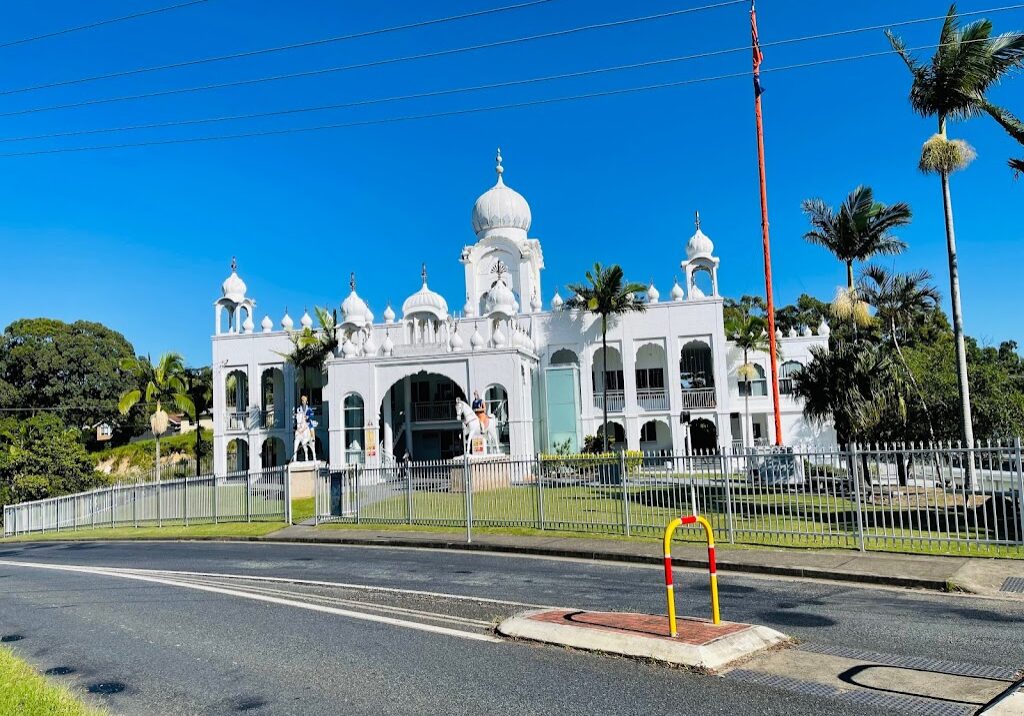
Woopi - Not one, not two but three Sikh temples
Sikhs began to settle in Woolgoolga during World War II, because war-time labour shortages led to a relaxation of the previous prohibition of non-European labour in the banana industry. Woolgoolga now has the largest regional Sikh/Punjabi population in Australia plus three Sikh temples and the Sikh Heritage Museum of Australia.
The town saw The First Sikh Temple officially opened in June 1968 at Hasting St, Woolgoolga. It was also the first Sikh Temple in Australia. This was a simple brick building and looks for all purposes from the outside like many community halls and buildings.
This first Gurdwara building now shares its site and use with the new Gurdwara, built in a traditional Sikh architectural style with its magnificent gold and white roof domes, which opened in 2019. In 2020 the site and buildings were listed on the State Heritage Register by the New South Wales Government, highlighting their role in the state’s cultural history.
The third temple and perhaps the most well known because of its ornate decorative features and previous visibility to the Old Pacific Highway, is the Guru Nanak Sikh Temple opened in 1970. This is a popular temple because of its welcoming hospitality.
Woolgoolga is also home to the Sikh Heritage Museum of Australia, opened in 2019. This showcases the Sikh identity and religion, explores the complexities of Sikh spirituality, and the dedication of Sikh people throughout history in both Australia and the world. The exhibits explore the Sikh understanding of the origins of the universe, the lives and teachings of the Ten Gurus, the Sikh empire, Sikhs in the world wars, the Sikh ANZAC contribution, first migration of Sikhs to Australia and finally the establishment of a Sikh community in Woolgoolga.
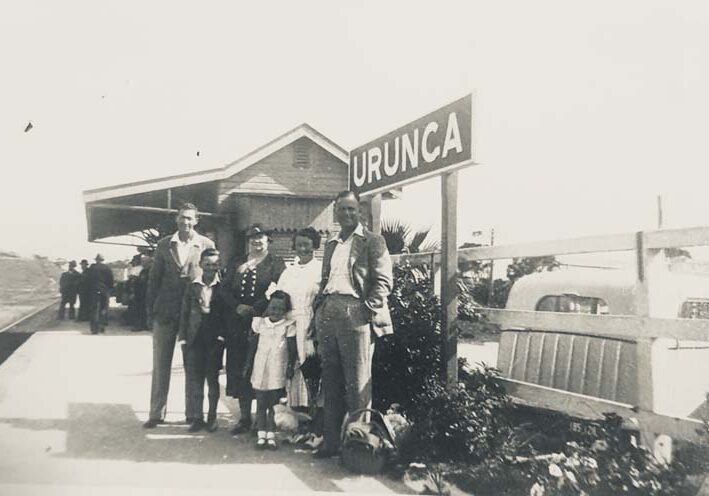
Celebrating a Centenary of Rail - Urunga
Urunga’s rail line and station opened one hundred years ago in 1923 transforming life for locals and those traveling north from Sydney. Previously passengers had to alight at Macksville to where the Sydney line had opened in 1919. They were then transported by road, across the Nambucca River at Macksville by ferry, up the muddy main street of Nambucca and onwards to Urunga, crossing South Arm Bellinger River by ferry before travelling on to Raleigh. The rail line from Coffs to Raleigh had opened in 1915.
The Urunga Community is getting together over this June long weekend to celebrate the centenary of the rail link. Besides formal proceedings to which guests will arrive by horse and carriage the Saturday event includes a Railway Picnic at the Lido and music opposite the hotel in the afternoon. Sunday will see an early start for the Riverside Markets before a Parade down Bonville Street into Bowra Street. The day will end with an afternoon Urunga Historical walk led by the Urunga Museum.
What's In A Name?
Delve into history and you will find place names often change. One of our Creative Communities on the Mid North Coast, Bowraville is a good example. In March 1841, Clement Hodgkinson explored the upper reaches of the Nambucca and Bellinger Rivers. He was the first European to make contact with the local Aboriginal communities and a small township Bowra sprung up in the 1850s and 1860s.
The word Bowra is thought to come from the Gumbaynggirr place name, Bawrrung, which possibly means cabbage tree palm. Other definitions given have been 'bullrout fish', 'scrub turkey', or 'bald head'. Another proposition is that the name comes from a Captain Bowra who sailed up the Nambucca River looking for cedar. The town was gazetted in 1870 and Bowraville Post Office opened on 1 August 1870. It was renamed Bowraville in the 1870s, to avoid confusion with the Southern Highlands township of Bowral.
For more than 150 years Bowraville's growth and economy has been based on timber and farming and today it has a population of just over 1100. In recent years tourism has become important with the town being a finalist in the NSW Top Small Town Awards. In identifying a point of difference it has acquired another informal name, the Verandah Post Town:
This charming heritage town is in the centre of the Nambucca Valley and is commonly known as ‘The Verandah Post Town’. Bowraville’s main street is lined with veranda-shaded footpaths, cafes, museums, art galleries and a treasure trove of Indigenous art and culture.
With its two museums, a restored historic theatre, and other heritage buildings it certainly has many stories to tell and share.
Vineyards of Port Macquarie
The first vineyard – Clifton – was planted in the Hastings region in 1837 by colonial surveyor Henry Fancourt White. Then in 1859 vigneron George Francis bought two parcels of land totalling 20 acres on what was then the New England Road. Successful gold prospecting at Major’s Creek near Braidwood meant he could build the cottage for his family and start his vineyard, now named Douglas Vale. The property was named after George Francis’ first wife, Margaret whose maiden name was Douglas. The first vines at Douglas Vale were Black Isabella cuttings believed to have come from Major Innes’ vineyard at Lake Innes where George had worked for three years, planting Major Innes' vineyard, before going gold prospecting.
Douglas Vale became known for its success in wine production between 1867 and 1918, winning prizes from shows in Europe. Its wines were exhibited in Bordeaux in 1882, Amsterdam in 1883, Calcutta in 1884 and 1885 and in London in 1886, winning commendations and medals.
At one stage in the late nineteenth century there were over 30 vineyards in Port Macquarie but the industry was not to flourish. Douglas Vale is today a chance to get a glimpse of what such early vineyards. Today there is a new crop of more industrial vineyards but it is still important to remember the early pioneers and the contribution they made.
The Douglas Vale homestead and its curtilage are classified by the National Trust of Australia and it is included in the Port Macquarie/Hastings Council list of Heritage sites. There is an amazing collection of family memorabilia which has been donated by family members on display in the homestead.
On The East Bank - Gladstone
Nestled on the banks of the Macleay River, Gladstone is a charming little village brimming with creativity, history and culture. Listed as one of the eight Creative Communities of the Mid North Coast, the village is home to an increasing number of art galleries, boutiques and cafes. Gladstone is known as the cultural heart of the Macleay Valley Coast.
That vibrancy of recent times has made the most of the opportunities available from the fact that so many historical buildings in the town have been retained. The village was surveyed in 1864 by Surveyor Ernst Herborn and was originally known as Darkwater. In 1870 its name was changed to Gladstone to commemorate the visit of the Earl of Belmore, Governor of NSW. Gladstone was the maiden name of the Governor’s wife.
A walking tour of the towns heritage buildings and places identifies 19 heritage sites and features. Many of these have now been repurposed to provide the premises for new creative and vibrant ventures.
View walking tour here https://archive.kempsey.nsw.gov.au/heritage/pubs/walks-in-history-gladstone.pdf
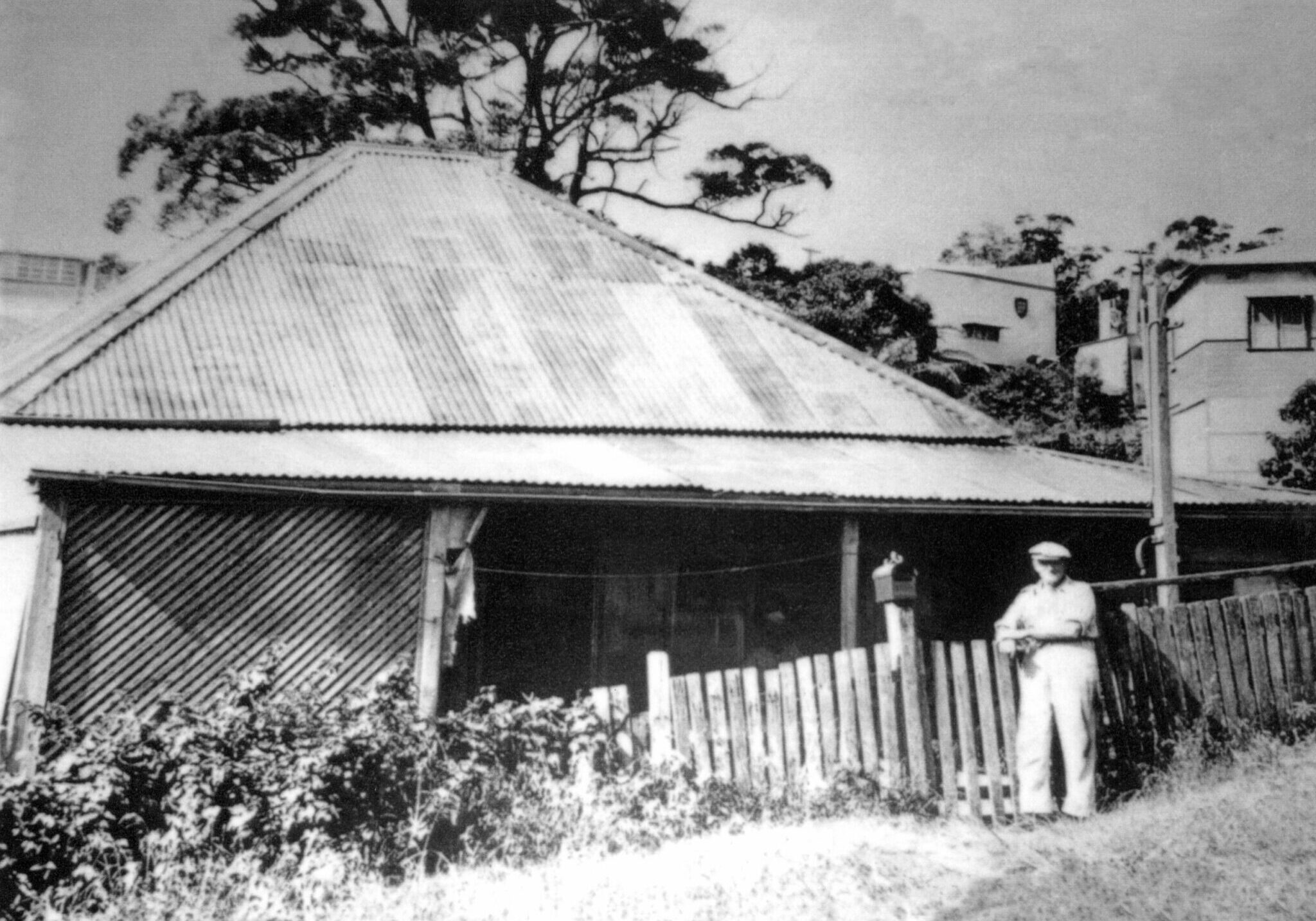
It’s in the Post. Nambucca’s First Post Office and Postmaster
In early European settlement the demand for postal services was high. People longed for communication with families left behind and needed the mail for land selection, employment and business opportunities.
The first post office in Nambucca Heads was a lean-to addition built on to the house where the Postmaster was to live in Bank Street. Alfred Martin was the postmaster in 1888 that brought with him experience as a leading Telegraphist at the Sydney G.P.O. He wired up a room ready to receive and send messages. With his wife Mary Ann they had four children and made their mark on the community through forming a choir and a love of entertaining.
Martin was the director of the Nambucca District Harmonic Society for many years and was presented with an engraved baton in appreciation of his efforts. The baton’s remarkable story is that it was stolen from the Nambucca Headland Museum around 1993, and then returned anonymously by mail in 2002. The package was postmarked Darwin so the baton has been well travelled. It now has a permanent resting place in a display box at the Headland museum, which is securely attached to the wall.
Our thanks to Rachel Burns at the Nambucca Headland Museum for this story.
When Dorrigo Ruled The Coast
Arts Mid North Coast features Dorrigo as one of its identified small creative communities. Today it is one of the townships of Bellingen Council with a population of around 1200 but its role was much greater in the past.
The Shire of Dorrigo was proclaimed on 7 March 1906, one of 134 shires created after the passing of the Local Government (Shires) Act 1905. At that time, the shire extended from Dorrigo in the west to Coffs Harbour in the east and northward to the Clarence River. The population of the township of Coffs Harbour totalled only 600 people, living in 132 houses. With Dorrigo Shire covering an enormous area, the decision was made in 1913 to divide it in two. The North Western section became Nymboida Shire, while Dorrigo Shire encompassed Dorrigo, Coramba, Coffs Harbour, Woolgoolga and Glenreagh. The headquarters were established at Coramba and Council Chambers built in 1914. The town already had a Police Station, Telephone Offices and a Courthouse. See link for heritage trail. https://www.coffscoast.com.au/wp-content/uploads/2021/09/Coramba_Village_Heritage_Walk_Brochure_web.pdf
However, as the town of Coffs Harbour grew, there was increased lobbying for it to be made a municipality in its own right with the addition of Sawtell from Bellingen Shire. By 1951 the Dorrigo Shire Council headquarters had moved to Coffs, on the site today known as 218 Harbour Drive.
The new shire of "Coffs Harbour" was gazetted on 30 November 1956 and took in the area from just north of Repton up to Pipe Clay Beach and west to Brooklana. Dorrigo Shire was abolished on 1 January 1957 and split between Bellingen Shire and the newly created Coffs Harbour Shire.
Bob Hope’s Impromptu 1944 Concert on the Mid North Coast
Back in 1944 locals in Laurieton noticed that a seaplane was in trouble. The PBY Catalina ‘Spare Gear’ came aground on the eastern end of the sand-spit opposite the Dunbogan Boat Shed. A local fisherman, Mr Wallace, used his schnapper boat to bring the stranded party ashore. Fortunately there were no serious injuries, but to the amazement of the local postmaster and others, the stranded group were entertainers from the U.S.A.. Among the group was international star and comedian Bob Hope and actress Francis Langford.
Eternally grateful for their rescue the group gave an impromptu concert at the local School of Arts starring Bob Hope live in person! As one local remembered: “It was a fabulous night, we laughed till tears rolled down our faces. Afterwards we taught Bob and his troupe how to do the Hokey Pokey. Well they all loved it.”
Bob Hope did not forget the people who “saved his life” and when in Australia in June of 1955, he invited a group of citizens from the town to one of his Sydney performances at the old Sydney stadium. The group later met with him at the airport and presented him with a large framed photograph of Laurieton.
Sawtell - A Brief History
Sawtell is one of our creative communities of the Mid North Coast now known for its cosmopolitan vibe blending food and the arts, but it has not always been that way. The original inhabitants of the land were Indigenous Australians of the Gumbaynggirr clan. The Aboriginal name for the area where the town now stands was Bongil Bongil, now reflected in a nearby National Park.
In 1863, a cutter carrying a load of cedar logs ran aground on what would become Sawtell Beach. A local farmer, Walter Harvey, assembled a team of workers to salvage the logs, and a small settlement developed near the site of the wreck. Forty years later, the land around Sawtell Beach was purchased and subdivided by Oswald Sawtell for housing and farmland. The town was officially gazetted as Sawtell in 1927.
Sawtell railway station, post office, school and hotel followed soon thereafter and by the 1930s Sawtell had become a thriving coastal village. Part of its distinct character today, the magnificent Moreton Bay Figs in the centre of First Avenue, are said to have been planted around that time by locals as a way of stopping the encroachment of sand into the village.
For much of its early development Sawtell was in the Bellingen Council area. It was not until November 1956 that a new shire of "Coffs Harbour" was gazetted and took in the area from just north of Repton including Sawtell. The area became popular with holiday makers and began to grow in permanent population. By 1956 it had a population of 1424. Today Sawtell has a population of 3788 and the village area around First Avenue is a recognised heritage precinct, with 16 individual heritage items registered as being of "local or regional significance."
South West Rocks - Maritime Heritage
It is not surprising with its stunning coastal location, that South West Rocks has a strong maritime history. The most plausible explanation for the name is that it was advice from the Pilot Officer, who instructed vessels to anchor in Trial Bay so the rocks would be south-west of their anchorage. The locals decided upon the name for the town in the 1910s.
A Pilot Station complex was built in the town in 1902. The complex consisted of five cottages to house the pilot and his four crewmen. The boatman's cottages are numbered sequentially from 1 to 4 and eastward from the Pilot's residence. A boatshed on the banks of Back Creek connected by a flight of stone steps led to the Pilot's residence. The site was chosen due to the uninterrupted views it provided for the Pilot to observe the arrival and departure of vessels at the Macleay River to the northwest and harbouring in Trial Bay to the east. A signal station and flagstaff was built on the headland adjacent to the maritime buildings. The complex of buildings has had a State Heritage listing since 2008.
Boatman's Cottage 1 is now both the town's Visitor Information Centre and a museum with an interesting display of the rich maritime history of the local region.
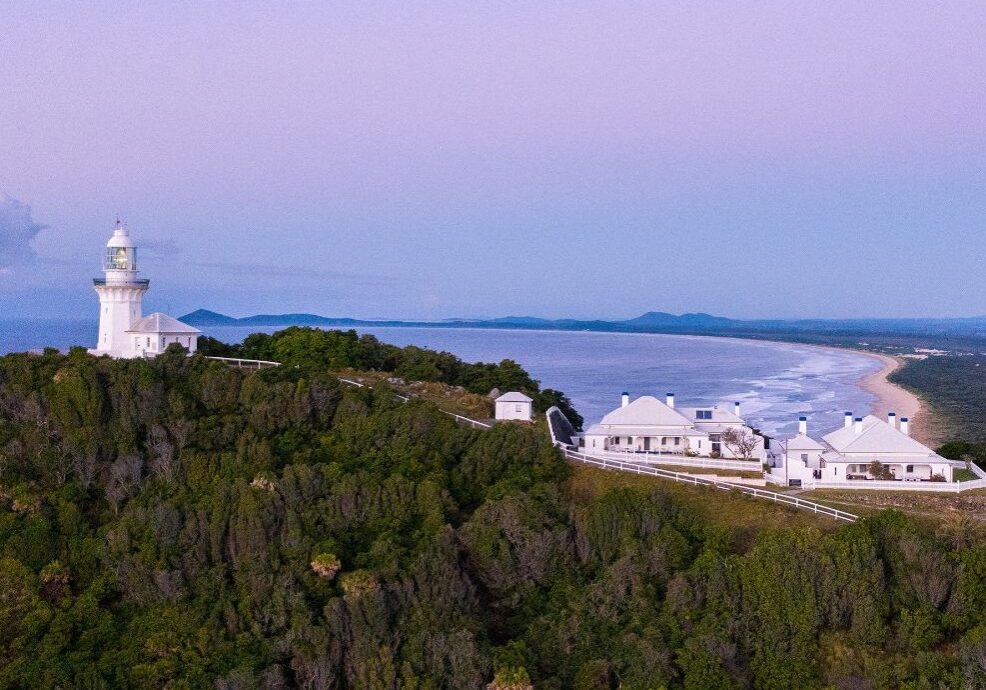
Smoky Cape Lighthouse
Smoky Cape headland was so named by Captain Cook after he saw Aboriginal fires burning there in 1770. Built in 1891, this heritage lighthouse is one of the last designs influenced by noted Colonial Architect, James Barnet. It directs boats towards the entrance to the Macleay River, which is located just to the north of the lighthouse. Standing on a granite headland 111 metres above the sea, its light is the highest in New South Wales.
James Barnet was dismissed in 1890 and the office of the Colonial Architect was replaced with that of Government Architect. Barnet's original design was however used for the lighthouse. The lighthouse's design is unusual for its octagonal tower, and was so designed because it was easier to cast the tower in the octagonal formwork than round formwork. It has a single-story pavilion entrance, cast-iron staircase and distinctive gunmetal balustrade. Also built on the site were a Signal House, Head keepers Cottage and two attached Assistant keepers cottages. The complex of buildings was added to the New South Wales State Heritage Register on 2 April 1999.
Now managed by NSW National Parks the complex is more than a protected site. Tours of the Lighthouse are run at different times of the year, usually school holidays and the cottages are available as accommodation providing a very unique experience.
Happy Anniversary - Woolgoolga Heritage Walk
The Woolgoolga Heritage Walk was developed and launched nearly 10 years ago on 10 June 2013.
The trail includes 16 stations along a 2.2 km walk with historically themed panels along a route between ‘Top Town’ on River Street and the Woolgoolga Beach Reserve. It takes around 40 minutes to walk (one way). It is an easy and pleasant walk that complements the Woolgoolga Whale Watch Headland Walk and Solitary Islands Coastal Walk.
Participants are informed by the very visible and informative heritage panels placed along the street verge from "Top Town" on River St to "downtown" on Beach St, through to Wharf St. One aim of the Heritage Walk is to enhance overall coherence to the town by linking both areas of Woolgoolga. Themes addressed on the panels include indigenous history, early settlers, logging & sawmills, rail line & jetty (neither of which still exists), Woolgoolga in the wars, various industries, early schooling, original tavern, early policing and the Sikh community. To view route go to https://www.woolgoolgaheritagewalk.org/woolgoolga-heritage-walk
The community project was initiated, driven and managed by the Rotary Club of Woolgoolga with support from Woolgoolga Lions and the Woolgoolga & Northern Beaches Chamber of Commerce.
Urunga Mural
One of the latest attractions in Urunga is a 23 metre long and 3.5m high mural in the town's small commercial heart. It was painted by Walkley award winning local artist David Bromley, with the planning and development process taking four years to completion.
The mural is a ‘trompe-l’œil’ or three dimensional painting. It features a row of three shopfronts (Chemist, Post Office and General Store) dating back to the early part of the last century. The characters in the mural are based on real local people including the local chemist and a ‘wanted’ figure. They certainly bring the towns history alive and are a talking point for both residents and visitors.
Bromley was commissioned by Bellingen Shire Council, via a grant from the NSW Department of Trade & Industry, to transform the street-facing walls of century-old buildings in the picturesque mid-NSW coastal township. However it is not the only example of art bringing back life to the town. A community arts group and cooperative has transformed the old butcher shop on the corner of Urunga’s main street into the thriving Arts Space.
Journeys
Journeys is a new joint project currently being developed by the Mid North Coast Chapter of Museums Australia and Arts Mid North Coast with support from the NSW Government through Heritage NSW.
Every week during the 2023 SHINE Festival we have been showcasing one of the nearly 50 objects that have been selected to be featured in a new online exhibition being developed by the Mid North Coast Chapter of Museums Australia.
Journeys is a project centred around collections and moveable heritage items on the Mid North Coast of New South Wales. The project will promote and engage people to explore and discover more about the region's history and cultural identity through online and physical initiatives including an interactive story telling website, video interviews, podcasts, heritage tourism trails and social media posts. The project focuses on stories about immigration, travel including tourism, and transport and connects moveable cultural heritage collections to historic places on the Mid North Coast including those on the State Heritage Register.
It is expected there will be another couple of months work in photographing the key objects and finalising the website design and related marketing and social media collateral. A launch date for the online exhibition is expected in August.
Our Cultural Trails
Our cultural trails are a great way to explore the heritage and history of the Mid North Coast. You'll find Aboriginal experiences, regional museums, fascinating heritage places and beautiful cultural walks right here. You can even explore our histories in the comfort of your own home with our online trails.

